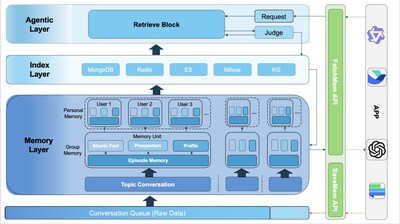Bytom’s AI + Blockchain Algorithm Debut at MIT as Chinese Blockchain Industry Takes Off
Press Releases
Apr 20, 2018
BOSTON, April 20, 2018 /PRNewswire/ — The “Bytom Algorithm Public Release” Conference has been successfully held at the Massachusetts Institute of Technology on April 15, 2018. This is the first international public disclosure on details of Bytom’s AI-friendly Tensority algorithm by founder of Bytom Duan Xinxing and the Bytom team, and also the first time for a Chinese team to release theses on Artificial Intelligence and blockchain at MIT.
The innovative consensus algorithm “Tensority” created by Bytom is based on the tensor calculation with advantages from other consensus algorithms. A glamorous development would be the adoption of the Matrix mechanism as the fundamental component of AI deep learning. Based on the innovations above, it enables the PoW more pervasive and friendly to ASIC, meanwhile its dedicated consensus equipment could be engaged in AI cloud acceleration to reduce wastage of resources and endow calculation with more social value.
Digging the blue ocean market, Blockchain + Artificial Intelligence is imperative
In 2017, the State Council officially issued the ‘New generation artificial intelligence development plan’, in which it was pointed out that AI would occupy a very important position in the development of the country. It is expected that the scale of China’s Artificial Intelligence market will have reached 100 billion by 2018. This is comparable to cloud computing in rapid growth, as the infrastructure for cloud computing has rapidly expanded – 30% of Intel’s server business is now provided for cloud computing companies. And the server sales in the Asia-pacific region alone have increased by 9.7%. Cloud computing’s rapid growth is to the server market what AI is to the ASIC chip market. It is within expectations that when the scale of the AI market reaches hundreds of billions, the market scale of the ASIC chip market certainly will reach tens of billions.
By adopting the Matrix mechanism, Bytom redesigned the PoW consensus mechanism, which is different from the traditional one. This algorithm has passed the theoretical verification in matrix filling and stochastic modelling cooperating with Southwest Jiaotong University laboratory. The adoption of the Matrix mechanism enables Artificial Intelligence to make full use of Bytom’s mining equipment. In this process, new hardware and Artificial Intelligence together greatly enhance the algorithm calculating speed, and meanwhile reduces wastage of resources. In this case, the enormous economic benefits of the mining market could greatly accelerate the development of AI ASIC chips and quicken the research on AI – and vice versa, the rapid development of AI could also help boost increasing demand for ASIC miners. Therefore it would become a virtuous cycle.
AI algorithm powers millions of Edge Computing terminals to be consensus nodes
Edge computing is a method of optimizing cloud computing systems by performing data processing at the edge of the network, near the source of the data. This reduces the communications bandwidth needed between sensors and the central data center by performing analytics and knowledge generation at or near the source of the data. It is an open platform integrated with the Internet, calculation, storage and applications. Compared with cloud computing, edge computing focuses more on the real-time intelligence with devices such as webcams acting as terminal equipment. In this context, edge computing has become the key layout of AI-related chip manufacturers and equipment integrators, and the chip maker giant ARM expects 100 billion AI-related chips will ship by 2020.
Bytom’s Tensority algorithm powers millions of Edge Computing terminals to become consensus nodes. Taking webcams for example, a webcam could fully meet the requirements of a consensus node, for it has a large equipment base in standby mode 24/7 with access to network and storage, and more importantly it could run the Tensority algorithm. According to statistics, as of 2017 China has had 176 million webcams; the number is expected to exceed the population of all mankind in 2023, and it will further explode beyond even that in the future.
AI is booming and blockchain is buoyant. Satoshi’s Bitcoin: A Peer-to-Peer Electronic Cash System has had a profound effect on human society like a butterfly fluttering its wings on the other side of the ocean. The combination of two leading technologies of the day – blockchain and AI computing – makes overwhelming sense as something capable of bringing further benefits to society. A big and meaningful stride towards blockchain would enable China to rise ahead of its peers and have a big say in the future of this sector.
![]() View original content:http://www.prnewswire.com/news-releases/bytoms-ai–blockchain-algorithm-debut-at-mit-as-chinese-blockchain-industry-takes-off-300633761.html
View original content:http://www.prnewswire.com/news-releases/bytoms-ai–blockchain-algorithm-debut-at-mit-as-chinese-blockchain-industry-takes-off-300633761.html
SOURCE Bytom



